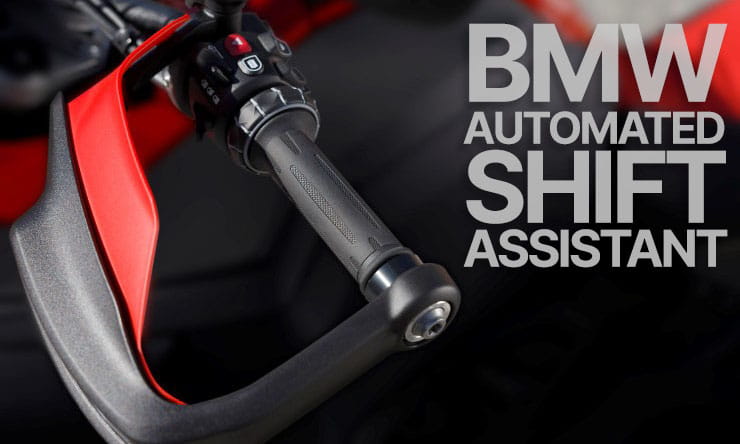
Date reviewed: June 2017 | Tested by: John Milbank | Price: £199 + £67 per year | www.cantrack.com
Originally developed for the agricultural and industrial markets, which suffer serious issues with the theft of equipment worth hundreds of thousands of pounds, CanTrack is a small, self-contained device that can be hidden almost anywhere, without needing to splice into your bike’s wiring loom.
The majority of subscription-based tracking systems currently on the market use cellular communication to talk to a server when the bike goes into an alert state (for instance, if shaken). CanTrack instead checks in only at customisable times, at which point the device updates its location. It’s also at these predetermined moments in the day that its other features can be enabled.
As a thief might shake a bike to see if it has an alarm, it’s becoming more likely that they might do the same and use a cellular communication detector to ‘look’ for a tracking unit. By only communicating at set times, CanTrack will not be visible to this type of attack.
Of course, the disadvantage of not alerting the owner or the tracking company of movement is that theft won’t be notified until the owner discovers it. The device could have motion sensing turned on all the time (though this would cause a significant drain on the battery, as it would be communicating even when you’re riding the bike), or motion detection can be enabled during a single period each day, individually for Monday to Sunday. If you never ride your bike between 11pm and 6am, you could set it to motion sensing (which wouldn’t add additional battery drain unless triggered), though then the device would be communicating, so would work in the same way as most other trackers, being detectable in the event that a thief was scanning for it.
If using motion sensing, it’s possible to disable it before you ride, to save the battery, but keep in mind that this can only be done via a desktop computer’s browser – when viewed through a mobile device, you’re unable to change any of the settings, though an app is said to be in development. Also, you will need to have data or WiFi to see any email alerts, as it doesn’t send SMS alerts to your phone as some others do, and the call-centre won’t be monitoring the device unless you report it stolen.
Out of the box, checking in twice a day, the standard CanTrack, which measures 68mm square and 25mm thick, will keep working for around three years. If checking in only once a day, the built-in, non-replaceable battery will power the unit for just over six years, while four check-ins reduces the life to just over one and a half years, and six to one year. If set to check in every hour, the battery life reduces to three months. An ‘Extended Battery’ version is available for £30 more, which doubles the battery life, but increases the unit’s size to 115x68x38mm, and weight from 100g to 220g.

CanTrack’s sensors can be activated only when the device next checks in.
Features
• CanTrack is fitted with cellular communication, which can also triangulate its position. It will operate in Europe by default, but can also be used globally.
• The fitted GPS will give a more accurate position than triangulation – to three or four meters – where the signal is clear.
• The Radio Frequency (RF) beacon allows the device to be found with pinpoint accuracy. This system cannot be jammed, but an operative must be within around one mile of the location to find it.
• A team of ex-police officers work for CanTrack, who, in the event of a theft, will be deployed with the aim of being at the vehicle within four hours of notification.
• Sensors can be activated that send an alert and updated location data if motion, shock, over-turn or light are detected, though these will initiate detectable communication (as other trackers do).
Fitting
Being self-install, there’s no additional expense in having a professional fit CanTrack, as there is with Thatcham-approved devices. While having a sealed unit with no need to wire into the vehicle’s loom means it can be put anywhere, space is still very limited on a bike. It’s impervious to water, so you needn’t worry about road grime or a jet-wash damaging it, but you do need to make sure a crook can’t see it. I recommend removing the sticker from the front… it’s a bit of a giveaway.
On our test bike, I ended up placing it in the space under the bike’s tank – while it’s visible through the frame rails, it blends in, so isn’t obvious. Tough double-sided foam tape is on the back of the unit, though there was nowhere flat enough to use this, so I secured it with nylon-ties through the two mounting holes.
Day-to-day use
As CanTrack is more of a passive device than many others, it has no impact on your use of the bike (unless you activate one of the sensors). If you take it on a ferry, or have sent the bike to a garage, you won’t need to change any settings or notify the company. There’s little need to ‘manage’ the device at all, so it’s pretty much a fit and forget system.

The location at last check-in can be seen on your mobile’s browser
Theft test
All our trackers tests are conducted in the same way – we will not notify the supplier of when we intend to perform a mock theft, and while we won’t waste police time to raise a crime number, we expect the supplier to demonstrate the full service.
We base our theft simulation around an office worker commuting at 9am and 6pm, their bike not in view. The motorcycle is ‘taken’ in a panel van with metal bulkhead at around 11am, the tracking company notified as soon as possible.
Level one: Stolen and left in street: Our CanTrack unit was set to check in at 10am and 5pm every day, so without any theft alerts, the owner isn’t able to notify the call-centre until 6pm. However, as the bike was in its new position before the 5pm check-in, the last known location was correct thanks to the built-in GPS, and the motorcycle was easy to find.
Once notified of a theft, a CanTrack operator takes the full details of the incident after you give them the crime number (your first call is always to the police). A signal is then sent to the device to wake up every 30 minutes, as well as when detecting motion and shock. The RF beacon is also set to turn on, though in this test, the GPS gave an accurate location. The new settings will not take effect until the next check-in (10am the next day in our case), but once enabled, will mean the unit goes into its highest state of alert.
Level two: Stolen and hidden in a building: The bike was moved to a brick-built garage, integral to a house. Reporting the theft at 6pm, the last known location was shown, though the GPS failed to get a signal – the cellular communication that was scheduled for 5pm put the location around 1km away from where the bike actually was.
The call-centre sent the updated settings to the unit, which took effect at 10am the next day. At this point, it was possible for an investigator to be deployed, using the unit’s RF beacon to pinpoint the bike’s location.
We also moved the bike to a local mechanic’s workshop, and here the GPS had a signal, successfully confirming the location. If confirmation is required that the vehicle is inside, the RF beacon can still be used, though it will only go live when the device next checks for updates; using our scenario, the bike being moved during the day, and theft discovered at 6pm, this was at 10am the next day.

Our bike, registered as ‘Steve Rose’, was successfully located by GPS when we took it to our local mechanic’s workshop
Level three: Stolen and hidden in a shipping container: Once the theft was discovered at 6pm, the bike still showed as being where it was left – this is due to the sealed metal container blocking any signal. While the call-centre sent the updated settings to the unit, the device couldn’t communicate, so the RF beacon could not be enabled.
Radio Frequency would have penetrated the container, but we were unable to turn it on, so the investigators could not find the bike. A device that automatically enables the beacon, and tracks from the moment of theft, would have shown the last location as just outside the container door, allowing investigators to find the bike with RF.
As it’s not possible to demand a location of the unit at will, if we’d known the bike had been stolen earlier, we still wouldn’t have been able to ‘ping’ it to find out where it was – only at 5pm would the device try to communicate again, and by that time, it was already in the container, so communication still failed.
After four days, we left the doors of the container open at 5pm; as scheduled, the unit attempted communication, and this time was successful. I very quickly got a call from one of the investigators to say that the bike had been located, and that he was ready to go to the location. Even if the doors had been closed again, the RF beacon was now active, allowing the bike to be found, and the police to gain a warrant for access.

Our shipping container test foxed CanTrack until it was next able to check in
Bike-jacking
In the event of the bike being taken from you with its keys, no current motorcycle device will automatically start tracking. However, as CanTrack can only be set to go into more regular updates when it next checks in, it wouldn’t be possible to call the company and tell them what had happened, asking for it to be tracked immediately – you’d have to wait until the next scheduled communication to begin to attempt locating your bike.
Support
CanTrack currently has the UK’s largest tracker investigation team, which is proving valuable as police resources become increasingly stretched. Four ex-police officers are based around the UK, with more trained contractors on call. In the event of a theft, once the vehicle’s location is known, an operative can attend the site, and be available for the police. Ex-serving officers can prove useful in liaison, especially as the police are now very unlikely to be trained in vehicle crime.
The investigator will also be in a position to pinpoint a bike’s location – even in a block of flats – thus making it far easier to obtain a warrant.
Conclusion
While for now at least, a lot of stolen bikes are moved somewhere else for a day or so to see if they have a tracker, crooks are starting to use scanning equipment to find the devices, and here CanTrack has an advantage in not communicating until a predetermined time (though remember that when switched to full alert, it will be discoverable just as any other device). However, it’s difficult to know at the moment if this outweighs the disadvantage of a lack of instant notification, and hence immediate tracking and location. It’s possible that a crook willing to ‘go equipped’ with a tracking detection unit would also have a jammer, which would beat this, and any other tracker. Locations to which stolen bikes are taken often have jammers, so unless a scheduled communication had taken place before a bike equipped with CanTrack had reached this point (and the owner had reported it stolen), it would not be possible to trace the bike until it came out again (assuming it wasn’t stripped). Using a shipping container simulates the journey of a bike that’s on its way out of the country, but also gives a guide to what could happen if a jammer was used at the destination.
Insurance discounts won’t be automatic, as the device isn’t Thatcham approved or professionally installed, but it’s worth talking to your broker, and some underwriters will still look favourably at the device, while the well-priced subscription service means that once the bike is located, there’s a good chance of it being recovered thanks to the experienced team of investigators.
The freedom to be moved around vehicles (and not just your bike – you could swap it to your car, motorhome, boat or even lawn-mower) is appealing, and the fact that it doesn’t need to be wired in will be a real benefit to owners of many classic bikes, or any other machine without a battery.
For more information on tracking systems, and reviews of other devices, click here.
CanTrack says….
“It’s good to see an article so well researched and thoroughly tested. CanTrack has been providing theft recovery systems for 13 years, so it’s a market we are very experienced (and successful) in. Over that time, we’ve seen significant shifts in the way assets are stolen and what happens afterwards, with much more aggressive and professional tactics used by thieves.
“The shipping container test John performed was very unusual for us. The CanTrack Asset is the only tracking system that uses the latest e-SIM technology (rather than a normal SIM card) and can connect to any mobile network signal present, so it's unusual for a shipping container to stop the signal. However it’s certainly not impossible in an already poor mobile signal area, but we’ve had countless amounts of kit back from the inside of shipping containers.
“Essentially, as long as the basic ingredients are there (GPS, VHF homing beacon and a physical team that will go and find your bike for you), the decision is about what you believe. It’s either the speed of hard-wired systems that can be highly successful if found within the first 30 minutes, or the need for battery powered products created solely for theft and to avoid the high-tech attacks used by thieves to locate and isolate your tracking device. Technology is rapidly progressing for theft, from diagnostic tools that detect the voltage drop on circuits to see where the tracker is installed, to scanners and jammers. This tech is highly prevalent in other markets and it will become more so in bikes. As a seller of both hard-wired and battery powered products, we can say with confidence and without prejudice we’re backing the right horse for now and the future.”





